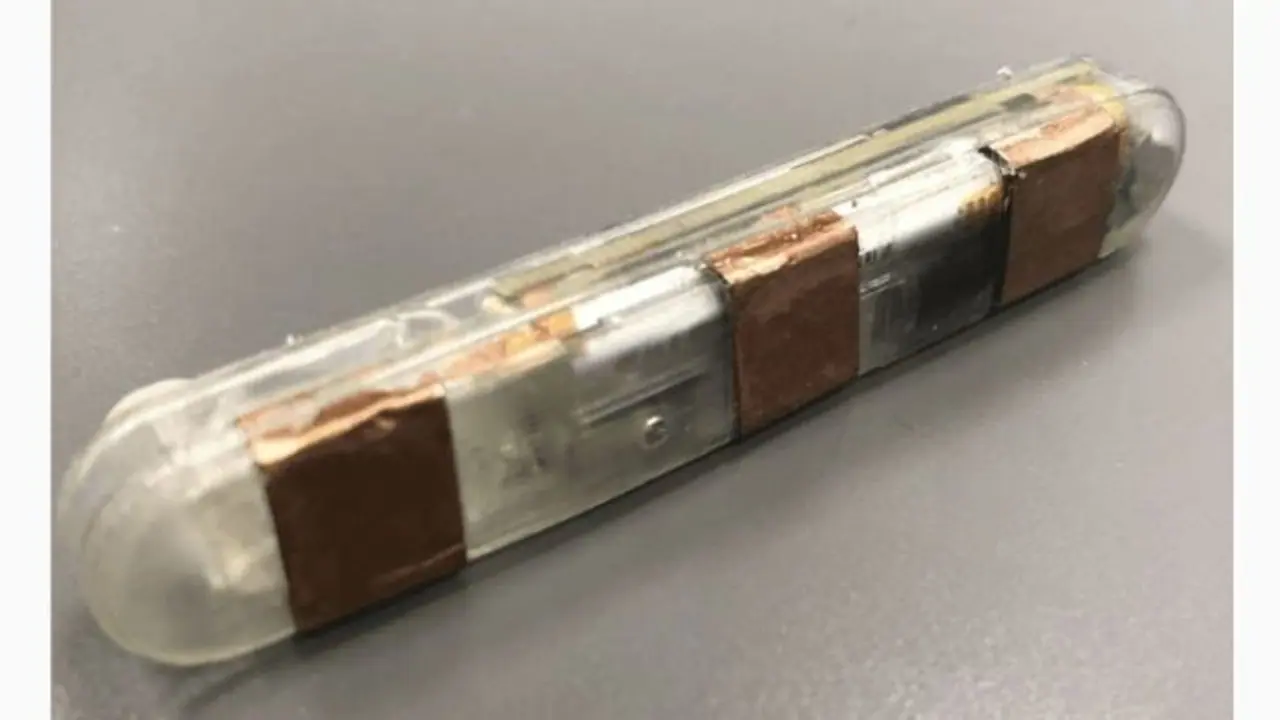Scientists have developed an implantable device called iSOS that detects opioid overdoses and automatically administers naloxone. Created by MIT, Brigham and Women’s Hospital, and Harvard Medical School, it monitors vital signs and delivers naloxone quickly. Initial tests on pigs showed high success rates, with human trials pending.
Scientists have developed an implantable device that can automatically detect an overdose and deliver naloxone—a medication used to counteract the effects of an opioid overdose that works by blocking the effects of opioids, helping restore normal breathing and consciousness—on its own, without needing someone nearby to help. This device could be especially helpful in emergencies when doctors or nurses are busy, or when paramedics cannot reach someone who has overdosed in time.

An opioid is a type of drug that is used to relieve pain. It works by interacting with specific receptors in the brain and body, reducing the feeling of pain and often producing a sense of euphoria. Common opioids include such prescription medications as oxycodone and morphine, as well as such illegal drugs as heroin. While they can be effective for pain relief, opioids also carry a risk of addiction and overdose.
Without immediate help, a person who has taken too many opioids can suffer permanent brain damage in just three minutes and may die within four to six minutes. Inspired by the use of this medicine, scientists have created an implantable device that can automatically detect an overdose and deliver naloxone on its own.
Traditionally, naloxone is given through a nasal spray, an injection into the muscle, or an injection into a vein, but all these methods need someone nearby to control the amount of naloxone given based on the overdose situation.
The new device, ‘implanted System for Opioid Safety’, shortened as iSOS, was developed by experts from the Massachusetts Institute of Technology (MIT), Brigham and Women’s Hospital, Harvard Medical School and The Broad Institute, as reported by the well-known media outlet Interesting Engineering. This innovative device is designed to automatically detect opioid overdoses and deliver naloxone, helping to prevent serious harm or death.
The iSOS implantable device automatically delivers naloxone into the patient’s system, at the same time keeping track of the vital signs. If it detects an overdose, naloxone is given within minutes. According to researchers, iSOS has several sensors that monitor the user’s heart and breathing, and it includes a pump that quickly administers naloxone when necessary.
The implantable device has not been tested on humans yet. However, tests on pigs showed that it revived 24 out of 25 animals within an average of 3.2 minutes, according to Interesting Engineering.
Giovanni Traverso, a senior author and a clinician and biomedical engineer at MIT, Brigham and Women’s Hospital and the Broad Institute, said an automated robotic system that can detect and reverse opioid overdoses could be groundbreaking, especially for people at high risk.
Addressing Opioid Overdose
Traverso noted that substance use is a serious issue and people who have overdosed are more likely to do so again. To help those at highest risk, researchers aimed to create an automated system for early detection of overdoses, which would quickly release naloxone when needed. The system also has an alarm system that alerts members of the patient’s family, or healthcare workers about the user’s condition. Traverso mentioned that this implantable device was only the first generation, suggesting that future models could be made smaller.
The iSOS device automatically delivers naloxone by continuously monitoring the user’s vital signs through multiple sensors. These sensors check heart rate, breathing rate, body temperature and blood oxygen levels. They are linked to a decision-making algorithm that identifies signs of an overdose.
When an opioid overdose is detected, the implantable device automatically activates a micro-pump that delivers naloxone directly into the user’s muscle, allowing for quick action without needing human help. This device is designed to handle overdoses from both prescription and illegal drugs.
Hen-Wei Huang, a co-first author and roboticist from Brigham and Women’s Hospital, Harvard Medical School and MIT, highlighted the biggest challenges in creating an engineering solution to prevent overdose deaths. He mentions that important challenges include ensuring that patients use the technology, reducing false alarms and making sure antidotes are delivered quickly. iSOS addresses these needs by creating a small robotic implant that has multiple sensors, continuous monitoring, built-in decision-making and a unique micro-pumping system.
Directly to Users’ Muscles
The iSOS device also has a refillable drug reservoir and an active pump that quickly delivers naloxone directly into the user’s muscles. When an overdose is detected, the device vibrates and sends an alert to the user’s smartphone. This technology allows users to cancel the naloxone administration if they realize they are not overdosing, as mentioned in the statement.
The study was published earlier on August 14, 2024, in the journal Device, as reported by Interesting Engineering.
(The author of this article is a Defence, Aerospace & Political Analyst based in Bengaluru. He is also the Director of ADD Engineering Components, India, Pvt. Ltd, a subsidiary of ADD Engineering GmbH, Germany. You can reach him at: girishlinganna@gmail.com)
